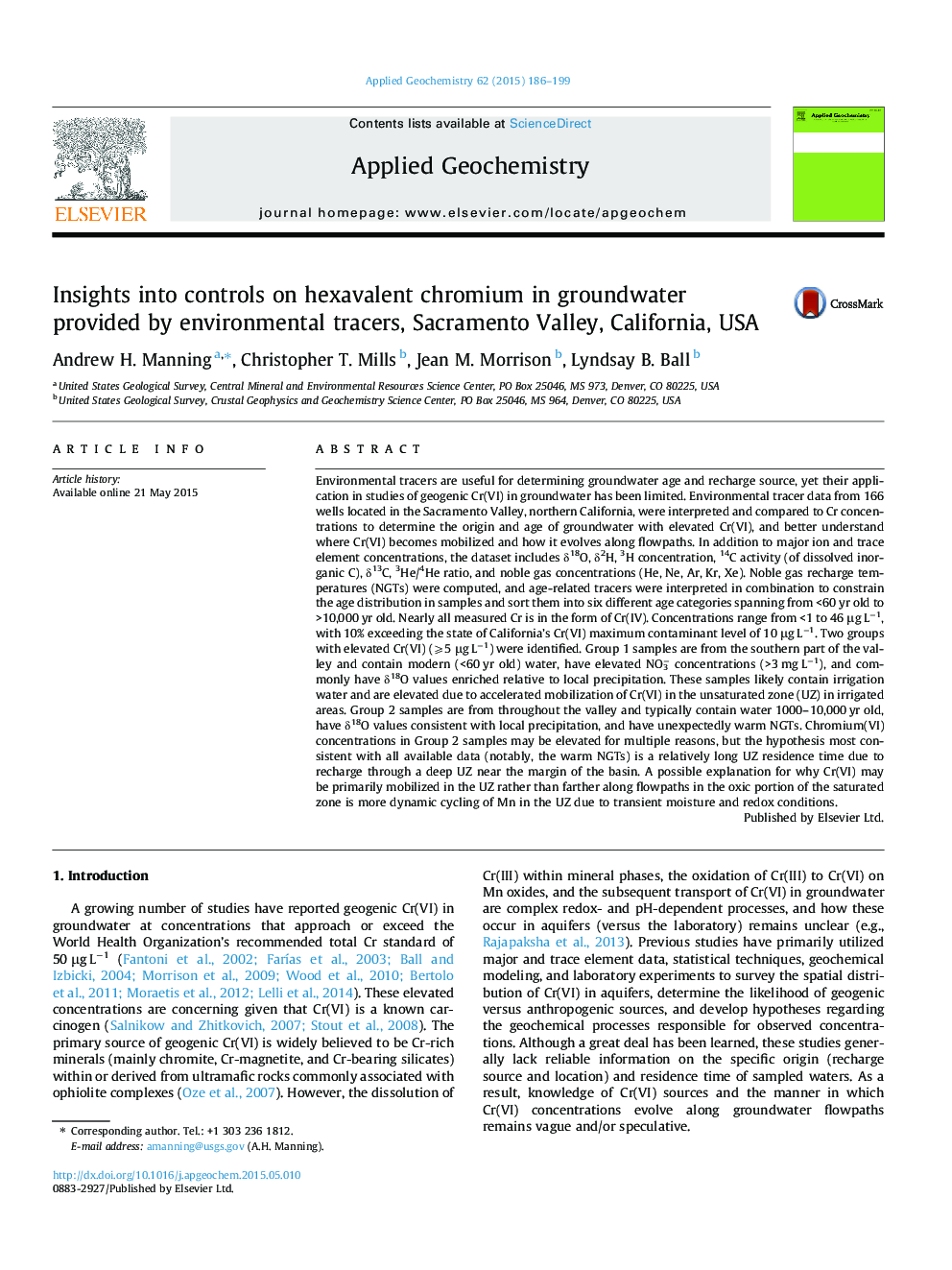| Article ID | Journal | Published Year | Pages | File Type |
|---|---|---|---|---|
| 4435626 | Applied Geochemistry | 2015 | 14 Pages |
•Environmental tracers and Cr data were interpreted to evaluate Cr source/transport.•One group of samples with elevated Cr(VI) contain irrigation recharge water.•A second group of high Cr(VI) samples are older and have warm recharge temperatures.•High Cr(VI) in the second group is likely from recharge through a deep vadose zone.•Vadose zone processes apparently control Cr(VI) in Sacramento Valley groundwater.
Environmental tracers are useful for determining groundwater age and recharge source, yet their application in studies of geogenic Cr(VI) in groundwater has been limited. Environmental tracer data from 166 wells located in the Sacramento Valley, northern California, were interpreted and compared to Cr concentrations to determine the origin and age of groundwater with elevated Cr(VI), and better understand where Cr(VI) becomes mobilized and how it evolves along flowpaths. In addition to major ion and trace element concentrations, the dataset includes δ18O, δ2H, 3H concentration, 14C activity (of dissolved inorganic C), δ13C, 3He/4He ratio, and noble gas concentrations (He, Ne, Ar, Kr, Xe). Noble gas recharge temperatures (NGTs) were computed, and age-related tracers were interpreted in combination to constrain the age distribution in samples and sort them into six different age categories spanning from <60 yr old to >10,000 yr old. Nearly all measured Cr is in the form of Cr(IV). Concentrations range from <1 to 46 μg L−1, with 10% exceeding the state of California’s Cr(VI) maximum contaminant level of 10 μg L−1. Two groups with elevated Cr(VI) (⩾5 μg L−1) were identified. Group 1 samples are from the southern part of the valley and contain modern (<60 yr old) water, have elevated NO3− concentrations (>3 mg L−1), and commonly have δ18O values enriched relative to local precipitation. These samples likely contain irrigation water and are elevated due to accelerated mobilization of Cr(VI) in the unsaturated zone (UZ) in irrigated areas. Group 2 samples are from throughout the valley and typically contain water 1000–10,000 yr old, have δ18O values consistent with local precipitation, and have unexpectedly warm NGTs. Chromium(VI) concentrations in Group 2 samples may be elevated for multiple reasons, but the hypothesis most consistent with all available data (notably, the warm NGTs) is a relatively long UZ residence time due to recharge through a deep UZ near the margin of the basin. A possible explanation for why Cr(VI) may be primarily mobilized in the UZ rather than farther along flowpaths in the oxic portion of the saturated zone is more dynamic cycling of Mn in the UZ due to transient moisture and redox conditions.
